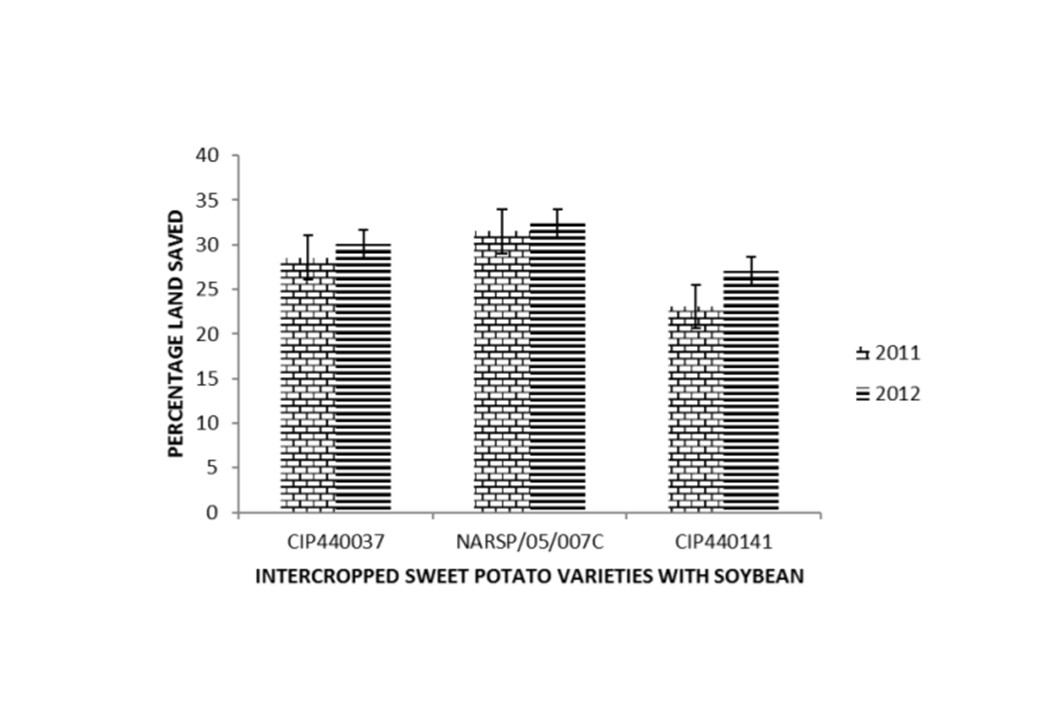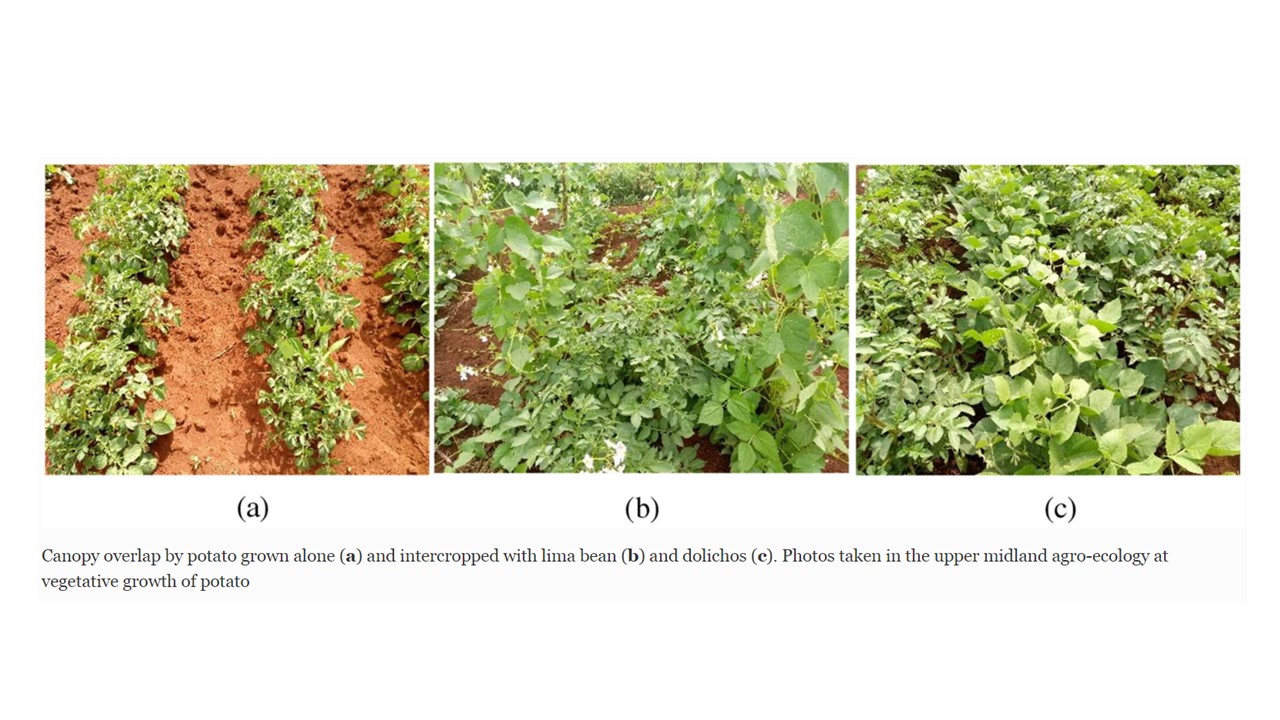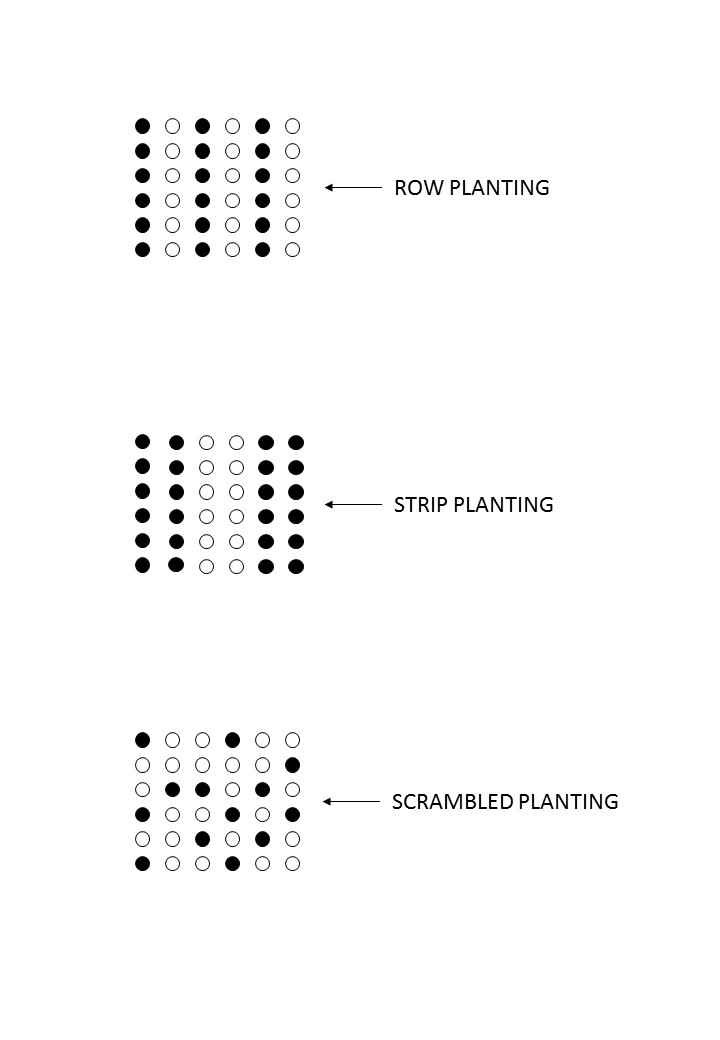Relay intercropping of sweet potato with legumes
Summary
Cultivating sweet potato alongside with legumes on the same piece of land offers multiple advantages as compared to when the two crops are grown separately in monocrop cultures. The mixing of sweet potato and legumes gives rise to increased yields and total harvests for farmers because of it allows to make better use of land, nutrient and water resources, improve microclimates inside the canopy, and reduce damage by pests and diseases. Legumes increase the availability of nitrogen in the soil during and after cultivation which promotes tuber production when intercropped with sweet potato, and saves on inputs of nitrogen fertilizer. Intercropping of sweet potato and legumes leads to a more nutritional and balanced diet for subsistence farmers, and also mitigates the risk of a hunger season when one of the crops fails because of drought or pest attacks.
About the Solution
Sweet potato and legumes are well suited to be planted simultaneously or in relay with up to one month time between planting, and the intercropped legume crop promotes the tuber crop’s growth at early and late stages of its lifecycle. Nitrogen fixation taking place in the roots of legumes benefits the productivity of sweet potato when grown alongside each other because part of the assimilated nitrogen is transferred between the crops through different soil processes. When intercropping the mineral fertilizers applied to sweet potato and/or legumes will be used more efficiently since either of the crop will take advantage of dispersing and residual nutrients. Intercropping of sweet potato with legumes allows to reduce weed infestation, soil erosion and run-off as the practice keeps more land covered and protected throughout the growing season. Erect and tall growing types of legumes help to better regulate the temperature of the soil and inside the canopy of sweet potato grown alongside through shading, which enhances crop water productivity and also optimize light use efficiency. Cultivating the tuber and legume crop on the same piece of land allows to obtain greater returns from labor, fertilizer and irrigation inputs as compared to their monocrop cultures. Crop diversification through intercropping of sweet potato and legumes strengthens the resilience of farming communities to unfavorable weather.
Intercropping of sweet potato and legumes is suitable for all regions in Sub-Saharan Africa when the variety of sweet potato and type of legume are appropriately selected for prevalent conditions. Cultivation of a legume alongside with sweet potato is especially advantages in farming landscape areas or on individual farmer fields that suffer from low nitrogen availability in soils, which will be alleviated by the biological nitrogen fixation that takes place. In communities where available land and labor are limited the use of sweet potato and legume intercropping will increase the use efficiency of these resources and lead to greater returns.
Sweet potato can be intercropped with all types of tall-growing legumes such as soybean, pigeon pea, cow pea, alfalfa and green grams, allowing farmers to choose in line with agro-ecological conditions and value:cost factors.
The approaches for planting and managing an intercrop of sweet potato and legumes are the same like when these are grown separately as a monocrop culture. Intercropping is easiest when sweet potatoes are planted on top of ridges, with other crops planted between the rows. Different layouts can be used for intercropping and relay cropping, with sweet potatoes and legumes planted on alternating rows, in strip of 2-3 rows or randomly scrambled across rows. If mixed with common beans, soybeans or peas, the sweet potato crop can be planted at its usual density and the legume in between, for large growing legumes the spacing of sweet potato needs to be adjusted. The two crops can be planted simultaneously or in relay so their growth and harvest are aligned with farmer preferences and conditions. Legume crops should be inoculated with an elite strain of N-fixing microorganisms to maximize carry-over effects on sweet potato.
Commercialization
Commercially available
Solution Images
Institutions

Accompanying Solutions
Orange-fleshed sweet potato (Bio-fortified, Drought and virus tolerant), Raised beds for sweet potato production and weed management



